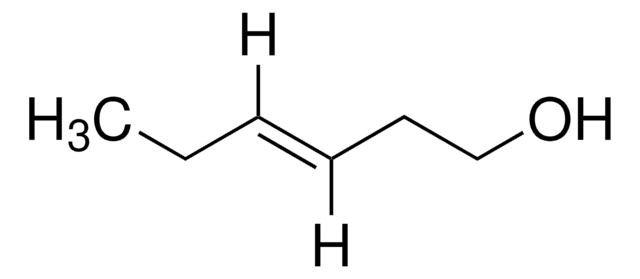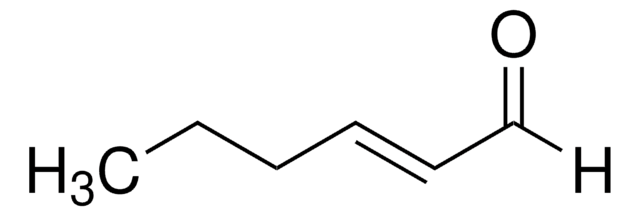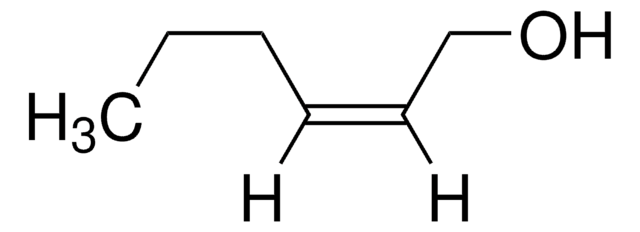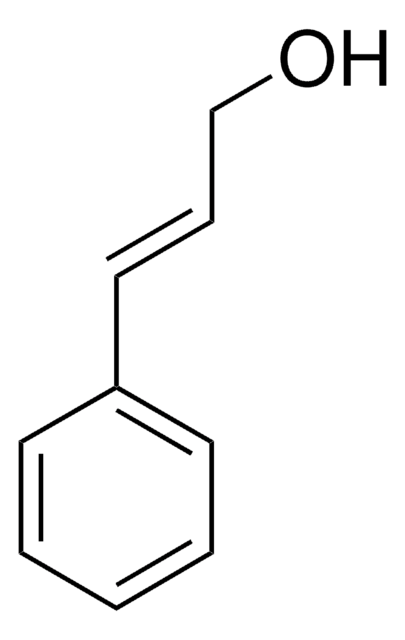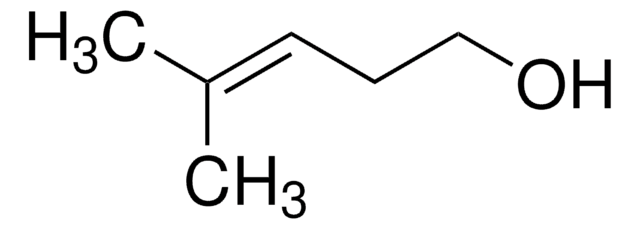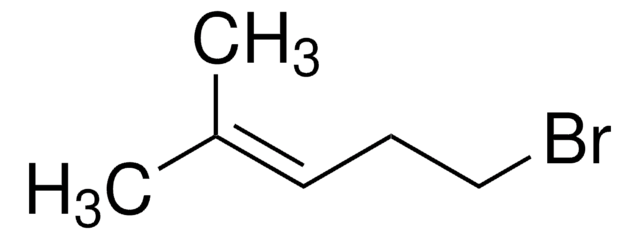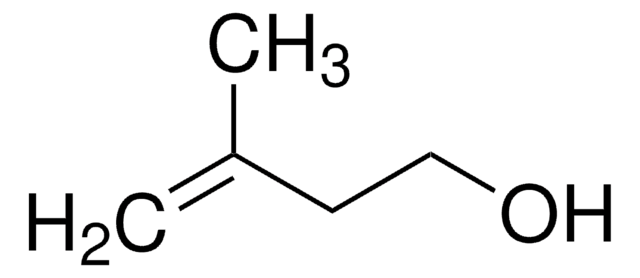224715
trans-3-Hexen-1-ol
97%
Synonym(s):
trans-3-Hexenol
Sign Into View Organizational & Contract Pricing
All Photos(1)
About This Item
Linear Formula:
C2H5CH=CHCH2CH2OH
CAS Number:
Molecular Weight:
100.16
Beilstein/REAXYS Number:
1719713
EC Number:
MDL number:
UNSPSC Code:
12352100
PubChem Substance ID:
NACRES:
NA.22
Recommended Products
Quality Level
assay
97%
refractive index
n20/D 1.439 (lit.)
bp
61-62 °C/12 mmHg (lit.)
density
0.817 g/mL at 25 °C (lit.)
functional group
hydroxyl
SMILES string
[H]\C(CC)=C(\[H])CCO
InChI
1S/C6H12O/c1-2-3-4-5-6-7/h3-4,7H,2,5-6H2,1H3/b4-3+
InChI key
UFLHIIWVXFIJGU-ONEGZZNKSA-N
Looking for similar products? Visit Product Comparison Guide
General description
trans-3-Hexen-1-ol (trans 3-Hexenol) stimulates the antennae of male H. cunea moths.
signalword
Warning
hcodes
Hazard Classifications
Eye Irrit. 2 - Flam. Liq. 3
Storage Class
3 - Flammable liquids
wgk_germany
WGK 3
flash_point_f
138.2 °F - closed cup
flash_point_c
59 °C - closed cup
ppe
Eyeshields, Gloves, type ABEK (EN14387) respirator filter
Choose from one of the most recent versions:
Already Own This Product?
Find documentation for the products that you have recently purchased in the Document Library.
Customers Also Viewed
Rui Tang et al.
PloS one, 7(11), e49256-e49256 (2012-11-21)
Volatile organic compounds (VOCs) were collected from damaged and intact mulberry leaves (Morus alba L., Moraceae) and from Hyphantria cunea larvae by headspace absorption with Super Q columns. We identified their constituents using gas chromatography-mass spectrometry, and evaluated the responses
Damon J Crook et al.
Journal of economic entomology, 105(2), 429-437 (2012-05-23)
Field trapping assays were conducted in 2009 and 2010 throughout western Michigan, to evaluate lures for adult emerald ash borer, A. planipennis Fairmaire (Coleoptera: Buprestidae). Several ash tree volatiles were tested on purple prism traps in 2009, and a dark
Andre F Cruz et al.
Phytochemistry, 78, 72-80 (2012-04-24)
Fusarium diseases cause major economic losses in wheat-based crop rotations. Volatile organic compounds (VOC) in wheat and rotation crops, such as chickpea, may negatively impact pathogenic Fusarium. Using the headspace GC-MS method, 16 VOC were found in greenhouse-grown wheat leaves:
Shigehiro Namiki et al.
Journal of comparative physiology. A, Neuroethology, sensory, neural, and behavioral physiology, 194(5), 501-515 (2008-04-05)
Pheromone-source orientation behavior can be modified by coexisting plant volatiles. Some host plant volatiles enhance the pheromonal responses of olfactory receptor neurons and increase the sensitivity of orientation behavior in the Lepidoptera species. Although many electrophysiological studies have focused on
Tsviya Olender et al.
Chemical senses, 37(7), 581-584 (2012-06-15)
Considerable evidence supports the idea that odorant recognition depends on specific sequence variations in olfactory receptor (OR) proteins. Much of this emerges from in vitro screens in heterogenous expression systems. However, the ultimate proof should arise from measurements of odorant
Our team of scientists has experience in all areas of research including Life Science, Material Science, Chemical Synthesis, Chromatography, Analytical and many others.
Contact Technical Service
